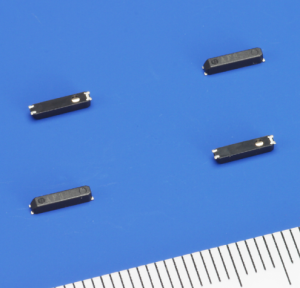Crystals are the Heartbeat of Digital Systems—NDK Crystals
Crystals are the Heartbeat of Digital Systems—NDK Crystals:
Crystals give out digital frequency systems used to fuel the “heartbeats” of chipsets. The “heartbeat” of a digital approach is the frequency at which the process of command and communication transmission first begins. When mechanical pressure is applied to crystals made of a piezoelectric material, the NDK crystals subsequently emit an electric charge because of the piezoelectricity of the substance. The material’s crystal lattice acts as a barrier that prevents the essence from being affected by the impacts of mechanical pressure. Computation and communication are powered in embedded systems by using an electrical charge, which has a frequency similar to an ideal square wave.
Without a heartbeat, you cannot send digital signals. It is an absolute need. Without access to energy and a communication method, embedded systems cannot perform their intended functions. The pulses produced by clocks contain information and messages. The system’s clocks take their timekeeping cues from the packed crystal, which also provides their frequency. Data that fuels logistical processes inside the system are sent by the heartbeat, which works in combination with the central processing unit, also known as the “brain” of the system.
Market Forecast:
As of 2016, crystal oscillators have shown a noticeable boost in worldwide market growth. The CAGR (compound annual growth rate) is expected to rise to 5.8% by 2022, and the market value is foreseen to reach $3.2 billion. Various variables, including the apps deployed, have affected this growth estimate. The number of applications for crystal oscillators has grown tremendously in the past few years. Oscillators in the automotive and technology industries saw a surge in the number of multiple orders placed. In 2015, Asia-Pacific had a market share of over forty percent, and it is anticipated that this region would keep its current market share during the projected period. Crystal oscillators that may be surface-mounted or through-hole installed make up the vast majority of all available types of solutions. Surface mount crystal oscillators brought in a significant amount of revenue for their respective producers, and it is anticipated that this trend will continue through 2022 at the very least. The temperature compensated CHINACHIPSUN NDK crystals oscillator was the product that brought in the most significant income, and it is projected that this trend will continue into the coming days.
About Crystal Oscillators:
Crystals are used in electrical devices to get the desired frequency control. Crystals are often formed of quartz and vibrate at a specific frequency after energizing them. Ceramic resonators are often used in electronic circuitry because they are less expensive than quartz crystals. Ceramic resonators are more compact and less costly than metal resonators, and they come in both surface-mount and through-hole designs. Ceramic resonators are also available. An oscillator circuit is often used when there is a need to generate a signal with a particular frequency. Oscillators are devices that produce a continuous waveform independently of any input from the outside world. The vast majority of oscillators are harmonic oscillators, also referred to as linear oscillators and relaxation oscillators. A feedback pathway establishes the frequency at which energy is transferred from active components to passive components in a harmonic oscillator. Elements of a relaxation oscillator that are active and passive are responsible for exchanging energy at a frequency determined by charging and discharging time constants.
Oscillators with crystals are the most common and may be in a wide range of frequency instruments. Another typical oscillator type is the oscillator. Crystal oscillators on the piezoelectric phenomenon, in which alternating voltage is applied to the crystal surfaces to induce vibrations of a specified frequency, which are then translated into oscillations. Oscillations are produced as a result of this process. Tiny and inexpensive crystals like quartz, tourmaline, and Rachelle salt are often used in oscillators.
Parameters to Consider When Selecting NDK Crystal:
- Operating Frequency: For a crystal oscillator, the operating frequency should be the most critical parameter since it is the primary function of the oscillator. Depending on the system’s requirements, a crystal oscillator’s frequency may vary from tens of kHz (say 32.768 kHz) to hundreds of MHz. The first step in selecting a crystal oscillator is determining the operating frequency.
- Input Voltage:It is typical to utilize voltages between 3.3V and 15V for crystal oscillators. An obvious explanation is that a crystal oscillator often functions at a voltage already present in the system, making it easier for the device to operate. All the voltages listed above are standard DC input voltages used in electrical devices. Choose an NDK crystals oscillator operating voltage depending on the input voltage of your system.
- Package: Crystal oscillators are in one of two package types: Surface mount or through-hole. A surface-mount packet is employed in most situations, although a through-hole package is needed for bigger oscillators. As technology advances, some TCXOs can currently be in a 1.6 x 1.2 mm package. The size of your applications dictates the adoption of a package.
- Output Performance: Rise/Fall Times and Jitter:When choosing an oscillator, the output performance of an NDK crystals oscillator is, of course, a significant consideration. An immediate rise/fall and lesser jitter are generally better for output performance. In high-frequency oscillators, excellent output performance is expected. Choosing an oscillator is a trade-off between the required performance and the price you’re prepared to spend. If you’re having trouble deciding on an oscillator, talking to a provider about reference designs will help.
Conclusion:
Crystal oscillators have a lot of uses in digital applications, and they come with many advantages. Crystals may have a wide variety of different frequencies via the manufacturing process. As you can see from the list above, CHINCHIPSUN has a wide range of NDcrystalls oscillators. Keep an eye on various factors, including operating temperature, age, equivalent series resistance (ESR), load capacitance, and more.

